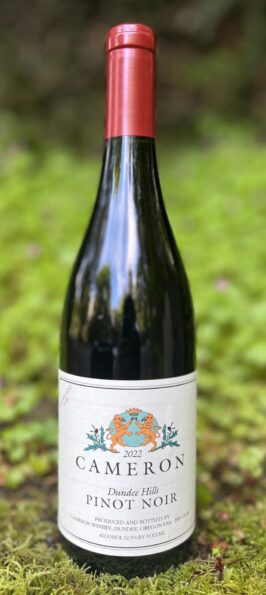Fire and Wine
From John, September 19th, 2020With the advent of global warming starting to manifest itself in significant ways, it should have been expected that at some point Oregon’s magnificent forests would be stricken by fire. The conditions that prevailed prior to the ignition step have become increasingly common over the last 10 years. Those conditions include longer, hotter and drier summers which dry out the forests and set them up for what happened. In this case the ignition step was the development of fierce dry winds from eastern Oregon followed by lightening strikes.
We realize that one internet theory involves Antifa Gods actually hurling the lightening bolts, but there is, frankly, scant evidence of that! At any rate, once the fires started to burn, the skies filled with unbelievable quantities of smoke which was pushed by the continuing east winds across the Willamette Valley and out to sea. Early on, the smoke was high above us raining down ash. Only later did it turn into a sort of ground smog that lasted for several days and made working outside dangerous.
Our vineyards were edging relatively close to ripeness as the fires hit and some wineries chose to pick their fruit in the early part of the scenario to try and avoid what they thought might be accumulating smoke taint. We decided that even if they were correct in that assessment (and there is scant evidence that we can find to support them), the health of our workers in the field was far more important than the wine grapes. So we waited as the sun disappeared and the air cooled and the grape vines went into a kind of dormancy. The fruit that was hanging on them did not move with respect to sugar and acid throughout this seeming apocalypse.
So while our “100 days from bloom” calculations put the beginning of harvest around the 25th of September, it was clear that such a date was not going to be accurate any more. Thankfully, on the night of September 17th an epic storm out of the North Pacific finally came rolling in with thunder and lightening and what turned out to be a massive amount of rain. At one point more than 1 inch fell on our vineyard in the course of a single hour (I was of course awake at 2am when this happened dancing on our deck likely babbling primitive incantations!). The cleansing rain continued for around 24 hours, helping extinguish the fires and renewing our hopes for the coming vintage.
Going into the vintage all of the fruit appears clean and vibrant on the vines. A second rain event that is to occur for 2 days prior to commencement of our harvest should bring even cleaner fruit. And since leaves were carefully pulled from the vines during the late summer (to allow air circulation and sun), at this point the chance of fungal diseases seems remote.
All in all, I think we could have a stellar vintage given the very small crop and small berry sizes. But only time will tell whether volatile phenols from the smokey conditions show themselves in the wines. Stay tuned!
Share ThisRecent News & Rants
old vines, old wines & an old winemaker
One of the advantages of being an “old-timer” in the world of enology and viticulture is that our vines have aged along with me. It is a well known phenomenon in the world of wine that old vines tend to produce superior wine. A recent tasting of 18 vintages of Clos Electrique Blanc magnums proved that adage to be true! Overall, the consensus was that 8-14 years of aging seems to be the absolute “sweet spot” for this magnificent vineyard.
There’s More... >What do winter cold snaps do to the vineyard?
With climate progressively changing, one phenomena that is starting to occur fairly regularly is an occasional bout of intense winter cold weather. In January 2024, temperatures descended to as low as 4F in high altitude vineyards. Read on to learn how grapevines respond to this stress.
There’s More... >Cheers to a fantastic year ahead!
Bottles of Cameron Winery wine that are currently for sale.
2022 Dundee Hills Chardonnay, 2021 White Oak Pinot noir, 2021 Abbey Ridge Pinot noir, 2021 Clos Electrique Rouge, 2021 Clos Electrique Blanc, 2022 White […]
There’s More... >

